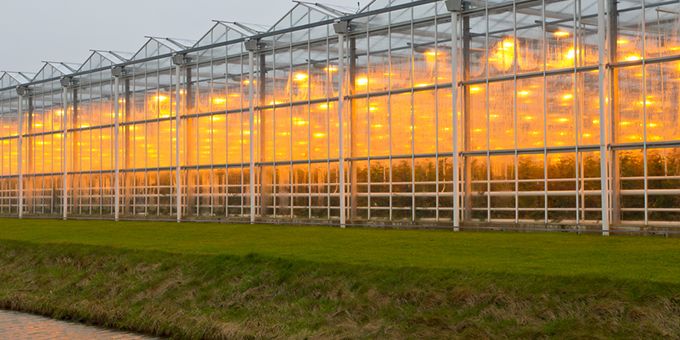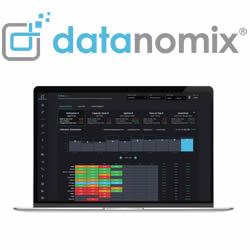Like many other industries, agriculture has discovered the benefits of data mobility, industry 4.0, and new technologies that unlock productivity and cost savings.
 Agriculture Manufacturing Trends to Watch
Agriculture Manufacturing Trends to Watch

Emily Folk | Conservation Folks
Like many other industries, agriculture has discovered the benefits of data mobility, industry 4.0, and new technologies that unlock productivity and cost savings.
The following provides a look at some trends in the manufactured farm implements market, as well as some of the high-tech solutions available to local farming families and major agricultural corporations alike.
1. Robotic Automation Saves on Labor Costs
2018 saw the global market for agricultural robots reach a new high of $4.1 billion. That makes automation an important trend to watch, even in this oldest of professions.
According to the United States’ 2017 Census of Agriculture, salaries and wages account for 12% of farming expenses, 43% of nursery and greenhouse expenses, and almost 40% of expenses in nut and fruit tree operations. Ag manufacturers have read the writing on the wall.
For instance, in 2019, John Deere announced a partnership to develop a new crop-spraying drone based on Volocopter’s VoloDrone. VoloDrone is entirely battery-powered, carries 440 pounds easily and sports 18 rotors for a 30-minute flight time. Thanks to a modular cargo system, the drone can autonomously dispense anti-frost agents, fertilizers and pesticides, and even sow new seeds while airborne.
Farmers should expect substantial labor and cost savings compared to using multiple field hands and helicopters to accomplish the same task. A single operator can pilot VoloDrone, or it can follow a programmed path without intervention.
2. New Systems and Business Models Achieve Data Mobility
According to Iowa State University, more than half the farmland in the state is rented and operated by tenants. This is part of a larger trend moving the industry away from the owner-operator model. As farmers retire, many wish to keep the land within the family but choose to outsource the daily operations to a partner.
This emerging business model has given rise to data-sharing technologies, including farming-as-a-service (FaaS). Iowa State notes that good communication is key for both partners in maximizing the health and usefulness of farmland. As a result, it’s now common for tenants to set up private databases and web apps to share data with owners on soil health, fertilizer, water and pesticide usage, crop yields, and rates and types of infestations.
Farming-as-a-service refers to the products and services that help farmers gather decision-impacting data. It’s also a way for farms to procure the equipment they need to react appropriately to it. Management and analytics solutions from IBM, The Climate Corp., AgroStar, and others provide software and hardware tools such as:
-
Remote networked sensors to gather data straight from the fields and make it available to all stakeholders.
-
Drones and AI to provide ongoing aerial photography and analytics to appraise crop health and spot pest infestations before they inflict damage.
-
Predictive models and software to help pinpoint the ideal time for harvesting. Harvesting too early or too late compromises crop yield and may lead to product spoilage.
3. Leasing and Predictive Maintenance Becomes the New Norm
In some cases, FaaS involves farmers leasing heavy equipment instead of buying it outright. Pequea, located in Lancaster County in Pennsylvania, designs its equipment using input from local farmers. Having data available on how machines are used and how microclimates change over time ensures new product designs solve all the customer’s problems.
Leasing is an appealing business model for many farmers. At a time when ag equipment becomes more sophisticated every year, it takes the worry out of investing in a machine only to have it become obsolete. Also, agriculture manufacturers and their vendors typically shoulder the cost and responsibility of equipment and vehicle maintenance.
There’s a downside to building intelligent ag equipment. Often, only authorized company representatives may perform maintenance on bespoke parts and software black boxes — even in something as simple as a tractor.
As technology takes hold in the agricultural sector, these growing pains should diminish. New designs for farming implements increasingly include sensors and real-time data analysis capabilities. This telemetry contains data on how machines are used, their performance and part conditions. This information greatly reduces the likelihood that farmers are left with nonfunctional equipment during a busy season.
One study of 3,407 ag industry service records showed machine intelligence is over 86% accurate in predicting parts failures before they happen. When machines can make their own recommendations on when they need service or replacement, the result is a lower chance of downtime. In turn, this means no delays in harvesting and lower chances of products spoiling before they can be picked.
Ag Tech and Manufacturing Answers the Call
Thanks to these and other technologies, the agricultural community is on its way to feeding people more efficiently than ever before. They will be essential throughout the industry for years to come.
The content & opinions in this article are the author’s and do not necessarily represent the views of ManufacturingTomorrow
Featured Product

